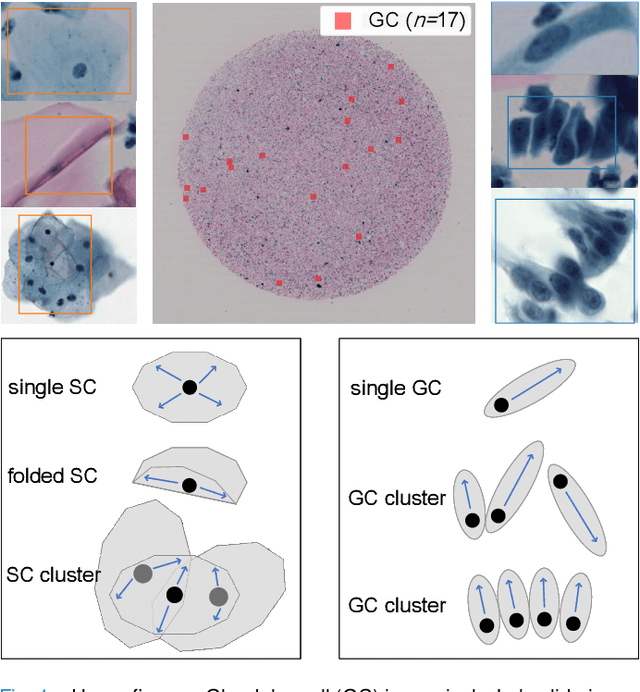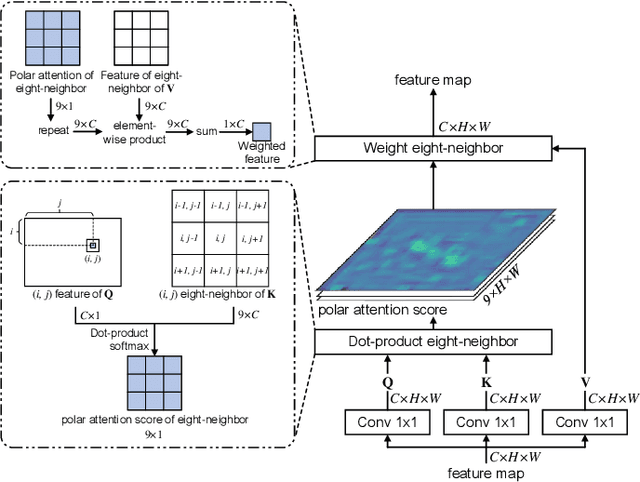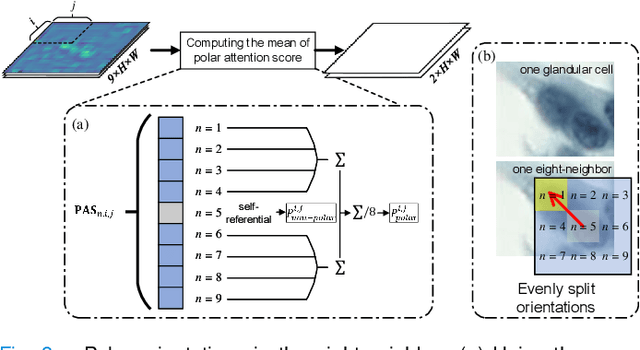Zehua Wang
CLIP-Optimized Multimodal Image Enhancement via ISP-CNN Fusion for Coal Mine IoVT under Uneven Illumination
Feb 26, 2025Abstract:Clear monitoring images are crucial for the safe operation of coal mine Internet of Video Things (IoVT) systems. However, low illumination and uneven brightness in underground environments significantly degrade image quality, posing challenges for enhancement methods that often rely on difficult-to-obtain paired reference images. Additionally, there is a trade-off between enhancement performance and computational efficiency on edge devices within IoVT systems.To address these issues, we propose a multimodal image enhancement method tailored for coal mine IoVT, utilizing an ISP-CNN fusion architecture optimized for uneven illumination. This two-stage strategy combines global enhancement with detail optimization, effectively improving image quality, especially in poorly lit areas. A CLIP-based multimodal iterative optimization allows for unsupervised training of the enhancement algorithm. By integrating traditional image signal processing (ISP) with convolutional neural networks (CNN), our approach reduces computational complexity while maintaining high performance, making it suitable for real-time deployment on edge devices.Experimental results demonstrate that our method effectively mitigates uneven brightness and enhances key image quality metrics, with PSNR improvements of 2.9%-4.9%, SSIM by 4.3%-11.4%, and VIF by 4.9%-17.8% compared to seven state-of-the-art algorithms. Simulated coal mine monitoring scenarios validate our method's ability to balance performance and computational demands, facilitating real-time enhancement and supporting safer mining operations.
A Survey on Diffusion Models for Anomaly Detection
Jan 20, 2025Abstract:Diffusion models (DMs) have emerged as a powerful class of generative AI models, showing remarkable potential in anomaly detection (AD) tasks across various domains, such as cybersecurity, fraud detection, healthcare, and manufacturing. The intersection of these two fields, termed diffusion models for anomaly detection (DMAD), offers promising solutions for identifying deviations in increasingly complex and high-dimensional data. In this survey, we systematically review recent advances in DMAD research and investigate their capabilities. We begin by presenting the fundamental concepts of AD and DMs, followed by a comprehensive analysis of classic DM architectures including DDPMs, DDIMs, and Score SDEs. We further categorize existing DMAD methods into reconstruction-based, density-based, and hybrid approaches, providing detailed examinations of their methodological innovations. We also explore the diverse tasks across different data modalities, encompassing image, time series, video, and multimodal data analysis. Furthermore, we discuss critical challenges and emerging research directions, including computational efficiency, model interpretability, robustness enhancement, edge-cloud collaboration, and integration with large language models. The collection of DMAD research papers and resources is available at https://github.com/fdjingliu/DMAD.
Efficient Detection Framework Adaptation for Edge Computing: A Plug-and-play Neural Network Toolbox Enabling Edge Deployment
Dec 24, 2024Abstract:Edge computing has emerged as a key paradigm for deploying deep learning-based object detection in time-sensitive scenarios. However, existing edge detection methods face challenges: 1) difficulty balancing detection precision with lightweight models, 2) limited adaptability of generalized deployment designs, and 3) insufficient real-world validation. To address these issues, we propose the Edge Detection Toolbox (ED-TOOLBOX), which utilizes generalizable plug-and-play components to adapt object detection models for edge environments. Specifically, we introduce a lightweight Reparameterized Dynamic Convolutional Network (Rep-DConvNet) featuring weighted multi-shape convolutional branches to enhance detection performance. Additionally, we design a Sparse Cross-Attention (SC-A) network with a localized-mapping-assisted self-attention mechanism, enabling a well-crafted joint module for adaptive feature transfer. For real-world applications, we incorporate an Efficient Head into the YOLO framework to accelerate edge model optimization. To demonstrate practical impact, we identify a gap in helmet detection -- overlooking band fastening, a critical safety factor -- and create the Helmet Band Detection Dataset (HBDD). Using ED-TOOLBOX-optimized models, we address this real-world task. Extensive experiments validate the effectiveness of ED-TOOLBOX, with edge detection models outperforming six state-of-the-art methods in visual surveillance simulations, achieving real-time and accurate performance. These results highlight ED-TOOLBOX as a superior solution for edge object detection.
FedDTPT: Federated Discrete and Transferable Prompt Tuning for Black-Box Large Language Models
Nov 01, 2024Abstract:In recent years, large language models (LLMs) have significantly advanced the field of natural language processing (NLP). By fine-tuning LLMs with data from specific scenarios, these foundation models can better adapt to various downstream tasks. However, the fine-tuning process poses privacy leakage risks, particularly in centralized data processing scenarios. To address user privacy concerns, federated learning (FL) has been introduced to mitigate the risks associated with centralized data collection from multiple sources. Nevertheless, the privacy of LLMs themselves is equally critical, as potential malicious attacks challenge their security, an issue that has received limited attention in current research. Consequently, establishing a trusted multi-party model fine-tuning environment is essential. Additionally, the local deployment of large LLMs incurs significant storage costs and high computational demands. To address these challenges, we propose for the first time a federated discrete and transferable prompt tuning, namely FedDTPT, for black-box large language models. In the client optimization phase, we adopt a token-level discrete prompt optimization method that leverages a feedback loop based on prediction accuracy to drive gradient-free prompt optimization through the MLM API. For server optimization, we employ an attention mechanism based on semantic similarity to filter all local prompt tokens, along with an embedding distance elbow detection and DBSCAN clustering strategy to enhance the filtering process. Experimental results demonstrate that, compared to state-of-the-art methods, our approach achieves higher accuracy, reduced communication overhead, and robustness to non-iid data in a black-box setting. Moreover, the optimized prompts are transferable.
Local Superior Soups: A Catalyst for Model Merging in Cross-Silo Federated Learning
Oct 31, 2024



Abstract:Federated learning (FL) is a learning paradigm that enables collaborative training of models using decentralized data. Recently, the utilization of pre-trained weight initialization in FL has been demonstrated to effectively improve model performance. However, the evolving complexity of current pre-trained models, characterized by a substantial increase in parameters, markedly intensifies the challenges associated with communication rounds required for their adaptation to FL. To address these communication cost issues and increase the performance of pre-trained model adaptation in FL, we propose an innovative model interpolation-based local training technique called ``Local Superior Soups.'' Our method enhances local training across different clients, encouraging the exploration of a connected low-loss basin within a few communication rounds through regularized model interpolation. This approach acts as a catalyst for the seamless adaptation of pre-trained models in in FL. We demonstrated its effectiveness and efficiency across diverse widely-used FL datasets. Our code is available at \href{https://github.com/ubc-tea/Local-Superior-Soups}{https://github.com/ubc-tea/Local-Superior-Soups}.
Task-Oriented Real-time Visual Inference for IoVT Systems: A Co-design Framework of Neural Networks and Edge Deployment
Oct 29, 2024Abstract:As the volume of image data grows, data-oriented cloud computing in Internet of Video Things (IoVT) systems encounters latency issues. Task-oriented edge computing addresses this by shifting data analysis to the edge. However, limited computational power of edge devices poses challenges for executing visual tasks. Existing methods struggle to balance high model performance with low resource consumption; lightweight neural networks often underperform, while device-specific models designed by Neural Architecture Search (NAS) fail to adapt to heterogeneous devices. For these issues, we propose a novel co-design framework to optimize neural network architecture and deployment strategies during inference for high-throughput. Specifically, it implements a dynamic model structure based on re-parameterization, coupled with a Roofline-based model partitioning strategy to enhance the computational performance of edge devices. We also employ a multi-objective co-optimization approach to balance throughput and accuracy. Additionally, we derive mathematical consistency and convergence of partitioned models. Experimental results demonstrate significant improvements in throughput (12.05\% on MNIST, 18.83\% on ImageNet) and superior classification accuracy compared to baseline algorithms. Our method consistently achieves stable performance across different devices, underscoring its adaptability. Simulated experiments further confirm its efficacy in high-accuracy, real-time detection for small objects in IoVT systems.
FedSoup: Improving Generalization and Personalization in Federated Learning via Selective Model Interpolation
Jul 20, 2023Abstract:Cross-silo federated learning (FL) enables the development of machine learning models on datasets distributed across data centers such as hospitals and clinical research laboratories. However, recent research has found that current FL algorithms face a trade-off between local and global performance when confronted with distribution shifts. Specifically, personalized FL methods have a tendency to overfit to local data, leading to a sharp valley in the local model and inhibiting its ability to generalize to out-of-distribution data. In this paper, we propose a novel federated model soup method (i.e., selective interpolation of model parameters) to optimize the trade-off between local and global performance. Specifically, during the federated training phase, each client maintains its own global model pool by monitoring the performance of the interpolated model between the local and global models. This allows us to alleviate overfitting and seek flat minima, which can significantly improve the model's generalization performance. We evaluate our method on retinal and pathological image classification tasks, and our proposed method achieves significant improvements for out-of-distribution generalization. Our code is available at https://github.com/ubc-tea/FedSoup.
Low-code LLM: Visual Programming over LLMs
Apr 20, 2023Abstract:Effectively utilizing LLMs for complex tasks is challenging, often involving a time-consuming and uncontrollable prompt engineering process. This paper introduces a novel human-LLM interaction framework, Low-code LLM. It incorporates six types of simple low-code visual programming interactions, all supported by clicking, dragging, or text editing, to achieve more controllable and stable responses. Through visual interaction with a graphical user interface, users can incorporate their ideas into the workflow without writing trivial prompts. The proposed Low-code LLM framework consists of a Planning LLM that designs a structured planning workflow for complex tasks, which can be correspondingly edited and confirmed by users through low-code visual programming operations, and an Executing LLM that generates responses following the user-confirmed workflow. We highlight three advantages of the low-code LLM: controllable generation results, user-friendly human-LLM interaction, and broadly applicable scenarios. We demonstrate its benefits using four typical applications. By introducing this approach, we aim to bridge the gap between humans and LLMs, enabling more effective and efficient utilization of LLMs for complex tasks. Our system will be soon publicly available at LowCodeLLM.
Cervical Glandular Cell Detection from Whole Slide Image with Out-Of-Distribution Data
Jun 01, 2022



Abstract:Cervical glandular cell (GC) detection is a key step in computer-aided diagnosis for cervical adenocarcinomas screening. It is challenging to accurately recognize GCs in cervical smears in which squamous cells are the major. Widely existing Out-Of-Distribution (OOD) data in the entire smear leads decreasing reliability of machine learning system for GC detection. Although, the State-Of-The-Art (SOTA) deep learning model can outperform pathologists in preselected regions of interest, the mass False Positive (FP) prediction with high probability is still unsolved when facing such gigapixel whole slide image. This paper proposed a novel PolarNet based on the morphological prior knowledge of GC trying to solve the FP problem via a self-attention mechanism in eight-neighbor. It estimates the polar orientation of nucleus of GC. As a plugin module, PolarNet can guide the deep feature and predicted confidence of general object detection models. In experiments, we discovered that general models based on four different frameworks can reject FP in small image set and increase the mean of average precision (mAP) by $\text{0.007}\sim\text{0.015}$ in average, where the highest exceeds the recent cervical cell detection model 0.037. By plugging PolarNet, the deployed C++ program improved by 8.8\% on accuracy of top-20 GC detection from external WSIs, while sacrificing 14.4 s of computational time. Code is available in https://github.com/Chrisa142857/PolarNet-GCdet
3D Dynamic Point Cloud Denoising via Spatial-Temporal Graph Learning
Apr 07, 2020



Abstract:The prevalence of accessible depth sensing and 3D laser scanning techniques has enabled the convenient acquisition of 3D dynamic point clouds, which provide efficient representation of arbitrarily-shaped objects in motion. Nevertheless, dynamic point clouds are often perturbed by noise due to hardware, software or other causes. While a plethora of methods have been proposed for static point cloud denoising, few efforts are made for the denoising of dynamic point clouds with varying number of irregularly-sampled points in each frame. In this paper, we represent dynamic point clouds naturally on graphs and address the denoising problem by inferring the underlying graph via spatio-temporal graph learning, exploiting both the intra-frame similarity and inter-frame consistency. Firstly, assuming the availability of a relevant feature vector per node, we pose spatial-temporal graph learning as optimizing a Mahalanobis distance metric M, which is formulated as the minimization of graph Laplacian regularizer. Secondly, to ease the optimization of the symmetric and positive definite metric matrix M, we decompose it into M = R'*R and solve R instead via proximal gradient. Finally, based on the spatial-temporal graph learning, we formulate dynamic point cloud denoising as the joint optimization of the desired point cloud and underlying spatio-temporal graph, which leverages both intra-frame affinities and inter-frame consistency and is solved via alternating minimization. Experimental results show that the proposed method significantly outperforms independent denoising of each frame from state-of-the-art static point cloud denoising approaches.
 Add to Chrome
Add to Chrome Add to Firefox
Add to Firefox Add to Edge
Add to Edge